The Butterfly Effect theorizes that, if a butterfly flaps its wings in the Amazonian jungle, a storm strikes France. That effect is what is called, in mathematics, Chaos Theory.
Related: Maple Leafs News: All-Decade Team, Kapanen, Marner, Matthews
Chaos Theory sees systems as very sensitive. And, in a sensitive system, a tiny change (a flying butterfly) can make a system behave completely differently somewhere else (a storm in Europe). In this particular example, weather (being a system) is changed by a flutter of motion far away. The things that change the world, according to Chaos Theory, can be very tiny.
Chaos Theory and Marner’s Contract?
The NHL is a sensitive system. In this system, sections of the Collective Bargaining Agreement (CBA) represent the butterfly’s wings and Marner’s six-year contract represents the storm in France. The changes ratified by the NHL’s current CBA, which might have seemed minor when they were negotiated in 2013, have proved to have major impacts on the system (the NHL’s salary structure).
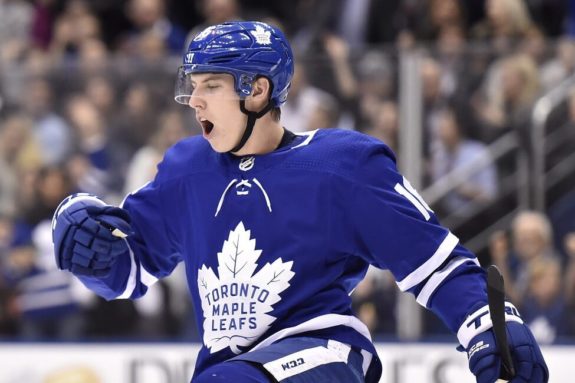
Here’s why. NHL contracts, salary cap structures, and draft lotteries (and, of course, other things) are governed by the CBA between the National Hockey League’s Players Association (NHLPA) and the NHL. This CBA sets out terms and conditions of employment for all professional hockey players playing in the NHL, as well as the rights of the NHL clubs, the NHL as an organization, and the NHLPA.
Taking even longer than Marner vs. the Maple Leafs to settle, the current CBA was ratified by all members in Jan. 2013, after a four-month lockout by NHL owners that canceled 510 regular-season games during the 2012-13 season. The current CBA runs ten years, expiring on Sept. 15, 2022. Because the dispute was so divisive, this CBA was negotiated as a 10-year deal, the longest in NHL history. This is the eighth season it has governed NHL affairs, and it expires after three more seasons.
The NHL’s CBA was negotiated using a typical labor-management process. Representatives from each side met until, over time, an agreement was reached using a process of collective bargaining.
Related: The NHL and Gary Bettman: 25 Years of Progress and Controversy
To the best of their collective abilities, the best minds representing each side got together to scrutinize how the choices they agreed upon would impact their respective clients’ needs – in this case, NHL team owners and NHL players.
As the repercussions of the Marner signing are felt around the NHL, it’s become clear that the best minds who created the NHL’s current CBA had simply no clue that what’s unfolding now would happen with regard to signing restricted free agents (RFAs).
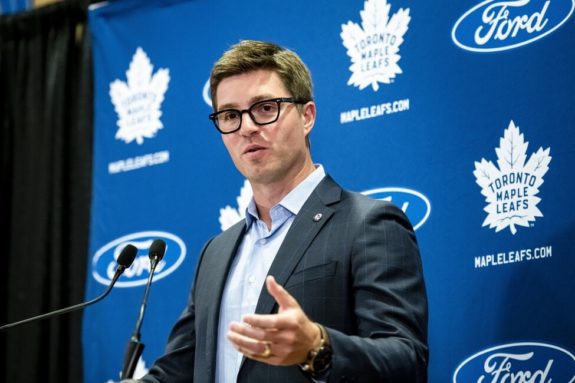
It isn’t that the representatives were ignorant or unintelligent. They were smart guys. They simply couldn’t foretell how sensitive the system would be.
What Seems Like Random Actions Are Somehow Related
What makes Chaos theory so difficult to understand logically is that changes are non-linear. That is, they cannot be studied as if they were 1-2-3, in an “if this happens this will follow” way. It’s really difficult to see how a tiny change impacts the system, which sometimes makes it seem as if changes are random. Yet, they are not random at all.
Without citing a lot of specifics, let me take two things the CBA spelled out in its sections – salary arbitration and the salary cap – and speculate some ways they might have impacted the current situation with signing RFAs.
Salary Arbitration
In the current CBA, salary arbitration for RFAs exists, but it is both experience and age-based. That is, players who enter the NHL between the ages of 18-20 need four years of professional experience to be arbitration-eligible; three years if they’re 21; two years if they’re 22-23; and only one season if they’re 24 or older when they enter the NHL.
What this means is that a young player who signs a three-year, entry-level contract but who becomes a star during those three seasons (as Marner and his teammates Auston Matthews and William Nylander did) have no arbitration “leverage” when their entry-level contract, which is capped at a three-year term, expires. (I use quotes around leverage because it has turned out differently than expected).
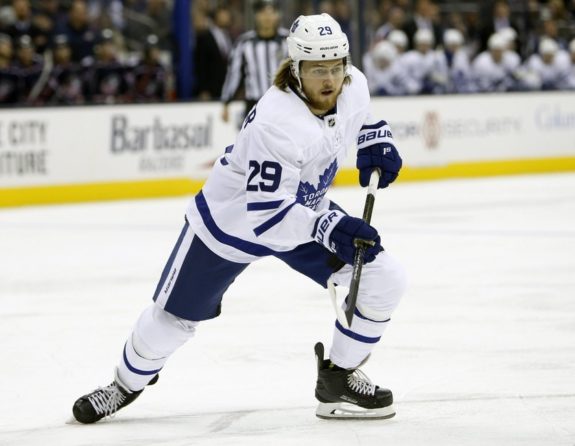
At first, and even as recently as two years ago, not allowing salary arbitration to RFAs was seen as a huge benefit to owners who believed it would keep a team’s salary structure under control. Obviously, that hasn’t been the case. Although it started in Toronto, where general manager Kyle Dubas became the pathfinder, it’s soon to spread to other teams in the NHL.
Related: NHL Opts Not to Re-open Collective Bargaining Agreement
Of note, Mikko Rantanen (Colorado Avalanche), Brayden Point (Tampa Bay Lightning), Patrik Laine and Kyle Connor (Winnipeg Jets), Matthew Tkachuk (Calgary Flames), Brock Boeser (Vancouver Canucks), Charlie McAvoy (Boston Bruins), and Travis Konecny (Philadelphia Flyers) are RFAs who remain unsigned.
The Salary Cap
Now let’s add the salary cap limits. As NHL fans know, the salary cap is the amount of money a team may (upper limit) or must (lower limit) spend on the total salaries of its roster players. A salary-cap hit is the amount of money each player’s contract takes from the team’s total payroll. The current upper limit for the 2019-20 salary cap is $81.5 million, and a team must fit its entire payroll under that dollar limit.
Obviously, there’s more at play in the NHL salary system than simply these two aspects of the CBA (salary arbitration and salary-cap limits); however, they offer an idea of how we got to where we are and what might happen next.
In speaking with a friend about when the CBA was finalized, we recalled how the owners smirked that they had “won” the CBA over the NHLPA. What they had in place at the time seemed straightforward regarding the salary cap and the limits placed upon player leverage. However, what the owners didn’t expect to happen was that player agents and team management would conspire to work out complex ways to get around or twist CBA rules under the salary-cap upper limit.
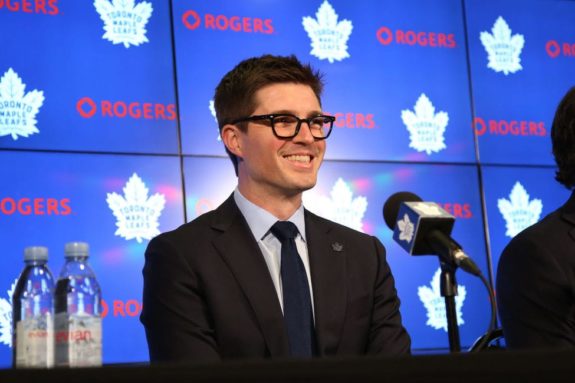
Specifically, in the case of the Maple Leafs, Dubas has proven to be an excellent manager of the CBA. That he was able to divest the team of Patrick Marleau’s contract in a trade to the Carolina Hurricanes and also trade for David Clarkson’s contract as a way to use Clarkson’s long-term injury status to remove enough salary-cap space to sign Marner to such a lucrative contract was simply genius. Most hockey commentators expected him to utilize Nathan Horton’s injury status, but few saw him trading for Clarkson’s contract as a way to double the long-term, salary cap impact.
Where Are We Now with NHL System Upheaval?
My point is that these two aspects of the CBA (salary arbitration and the ways the salary-cap upper limit was creatively engaged, all within the rules) were part of a series of small “flutters” that have created a “storm” throughout the larger system of the NHL. And, we are only beginning to see where that storm might touch down.
In a way, for owners and high-end players, the strict rules of the CBA don’t allow for financial losers. The upper limit of the salary-cap structure remains the same, and that means owners will pay out only a certain amount of money in salaries each season. Right now, according to the salary cap rules, the players’ share for the current CBA is 50% of actual hockey-related revenues for the league year that ends on June 30. As mentioned before, that amount was set at $81.5 million for the 2019-20 season.
Elite players also won’t suffer much, and the CBA rules that no single player may earn more than 20% of the upper limit of the salary cap. Specifically, Marner now earns 13.37% of that limit for the Maple Leafs and is the NHL’s seventh-highest-paid player. So, he’s within CBA limits.
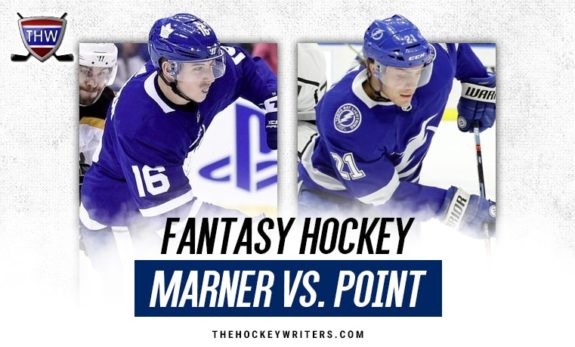
Impacting How Teams Are Structured
However, it’s clear that the changes will impact how teams are structured. Using the Maple Leafs as an example, four elite players now earn almost half of the total salary cap’s upper limit. Specifically, those numbers are Matthews at $11.634 million, John Tavares at $11 million, Marner at $10.893 million, and Nylander at just over $6.96 million.
Those numbers mean that the Maple Leafs must make 23 other players’ salaries fit under $42 million. That necessitates lopsided roster structures – a sort of upstairs/downstairs mentality to a team’s dressing room.
Related: NHL Rumors: Oilers, Lightning, Jets, Maple Leafs, More
Given that, it’s no wonder Dubas went on a micro-spending spree during the offseason when he inked Garrett Wilson, Pontus Åberg, Kalle Kossila, Tyler Gaudet, Nick Shore, Kenny Agostino, Jason Spezza, Kevin Gravel, Teemu Kivihalme, Ilya Mikheyev, and Joseph Duszak. I say micro-spending because, in total, Dubas spent close to $8,317,500, which is about $2.5 million less than what Marner signed for.
In an article on July 25, one hockey commentator stated, “What I find especially funny about this hilarious amount of people Dubas has signed is that if you add up all their AAV it only comes to— that’s like, two-thirds of a Mitch Marner! And I’d say goodbye to all of them if Mitch would just re-sign.”
I think this commentator was wrong. The best players with these cheap contracts, and with a compliment of players moving up from the Toronto Marlies, absolutely must make the roster to keep the team’s payroll under the salary cap upper limit.
Dubas signed all these players because he realized he had to reshape the team’s structure. To do this, a large number of players had to be signed to bargain contracts.
And, as I suggested, the Maple Leafs are far from alone. Other teams soon must engage a similar process to sign their RFAs, unless they want these players to sit for a season. And, because these young stars have become too integral to their teams, many general managers will also be forced to create upstairs/downstairs rosters similar to the Maple Leafs.
Impacts on When Teams Can Make a Stanley Cup Run
A second change likely to occur is in a team’s ability to make a run for the Stanley Cup. Unless there’s a fluke and a team simply goes on a lucky tear just at the right time, a Stanley Cup run will have as much to do with a team’s salary-cap structure as it does a team’s talent. both have become important.
The St. Louis Blues were an example. The Blues were $600,000 under the salary cap last season and were able to skate eight players who took up half the team’s total salary. However, the Blue’s also had a surprise breakthrough season from its young Jordan Binnington, who seemed to emerge from nowhere to supplant Jake Allen as the number-one goalie. His contract was a steal at $650,000. That’s no longer the case.
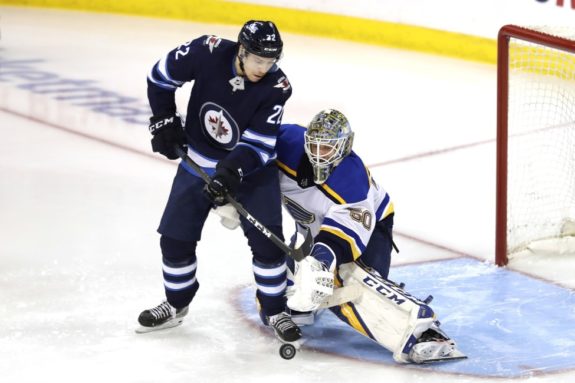
During this offseason, Binnington signed for $4.4 million and mid-level contracts (such as role-player Patrick Maroon) moved on. It’s difficult to go back-to-back at the best of times, but it will be especially tough for the Blues to repeat given the team’s changed salary-cap structure.
In the case of the Maple Leafs, one reason Dubas was so eager to sign Marner during this offseason was that he knew this season represented the Maple Leafs best salary-cap opportunity to pursue a Stanley Cup. After the 2019-20 season ends, only Morgan Rielly will remain a signed defenseman. Jake Muzzin, Tyson Barrie, and Cody Ceci are all on expiring contracts and need to be
Related: No Question: Maple Leafs’ Morgan Rielly Is a Norris Contender
Rielly will deserve a raise for sure, but where does the money come from given the team’s salary-cap limits? For me, scanning the roster, Zach Hyman seems to represent the most likely option as a forward. In addition, unless Ceci has an outstanding season, he seems likely to be let go.
What Does the Future Look Like?
Salary arbitration and the salary-cap structure are only two of a myriad of subtle changes the CBA made that have impacted the sensitive system that’s the NHL. What the long-term impact will be before this CBA has expired remains difficult to tell.
It’s also likely that, during the collective bargaining that drafts the next CBA, smart guys will meet to fix the issues created by the current CBA. Chances are they will create flutters that will produce different storms for the next CBA in ways we cannot yet understand.
That’s the chaos that is the NHL.